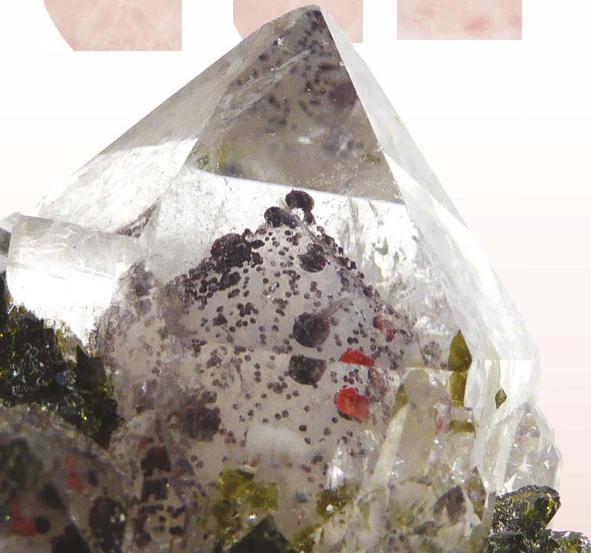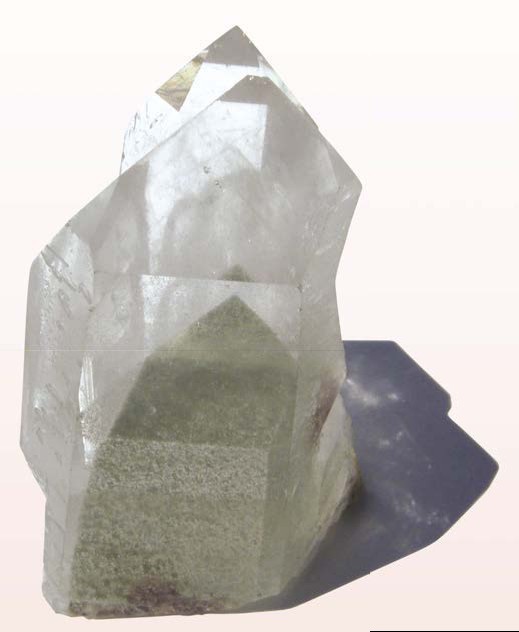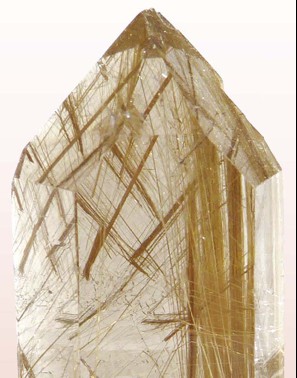EXPLORING QUARTZ INCLUSIONS
Understanding the Science Behind the Beauty
BY JIM BRACE-THOMPSON

Add just a dusting of ajoite or other minerals, and the value of a quartz crystal jumps exponentially!

This dusting of chlorite grew on a “phantom” face of a quartz crystal that paused in its development, only to resume growth at a later time.

Rutilated (sagenitic) quartz forms hair-like or acicular inclusions.

Ordinary quartz crystals are, well, rather ordinary.
At its most basic, an inclusion is a material that was trapped inside a mineral as it formed. Quartz is referred to as a host if it contains other minerals within itself. These other minerals, in turn, are referred to as inclusions. Inclusions can look like locks of golden hair, fuzzy moss or even floating spheres.”
Quartz inclusions take one of the most common minerals on Earth to a new level of science and beauty. Think quartz is common? Think again! As mineralogist John Sinkankas observed, “One could devote an entire lifetime to collecting examples of inclusions occurring only in quartz!”
WHAT IS AN INCLUSION?
At its most basic, an inclusion is a material that was trapped inside a mineral as it formed. Quartz is referred to as a host if it contains other minerals within itself. These other minerals, in turn, are referred to as inclusions. Inclusions can look like locks of golden hair, fuzzy moss or even floating spheres.
With precious gemstones, inclusions are an indicator of a natural versus a synthetic stone. Completely flawless stones are rare in nature, so a lack of imperfection screams synthetic and often lowers the value. But with quartz, when you add the imperfection of inclusions, the value can jump exponentially. An ordinary quartz crystal with dings can fetch as much as $200 if it has even a small inclusion of sky-blue ajoite. Google “tourmaline in quartz” and the price might be $150, even if the quartz crystal is hohum and the tourmaline is common black schorl.